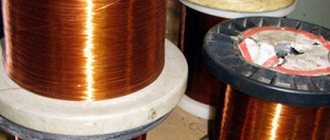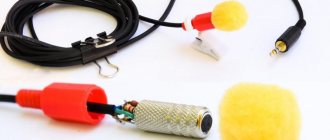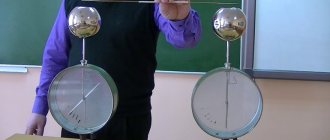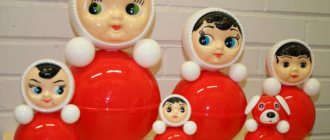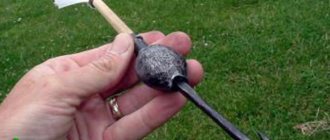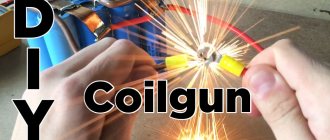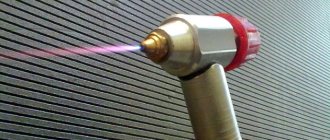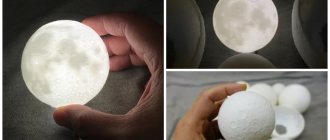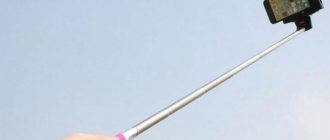It's safe to say that everyone has dreamed of taking a closer look at the stars. You can use binoculars or a spotting scope to admire the bright night sky, but you are unlikely to be able to see anything in detail through these devices. Here you will need more serious equipment - a telescope. To have such a miracle of optical technology at home, you need to pay a large sum, which not all lovers of beauty can afford. But don't despair. You can make a telescope with your own hands, and for this, no matter how absurd it may sound, you don’t have to be a great astronomer and designer. If only there was a desire and an irresistible craving for the unknown.
Why should you try making a telescope?
We can definitely say that astronomy is a very complex science. And it requires a lot of effort from the person doing it. A situation may occur that you purchase an expensive telescope, and the science of the Universe will disappoint you, or you simply realize that this is not your thing at all.
In order to figure out what’s what, it’s enough to make a telescope for an amateur. Observing the sky through such a device will allow you to see many times more than through binoculars, and you will also be able to figure out whether this activity is interesting to you. If you are passionate about studying the night sky, then, of course, you cannot do without a professional apparatus.
What can you see with a homemade telescope?
Descriptions of how to make a telescope can be found in many textbooks and books. Such a device will allow you to clearly see the lunar craters. With it you can see Jupiter and even make out its four main satellites. The rings of Saturn, familiar to us from the pages of textbooks, can also be seen using a telescope made by ourselves. In addition, many more celestial bodies can be seen with your own eyes, for example, Venus, a large number of stars, clusters, nebulae.
Thermal imager from a camera
The thermal imager is a rather complex device
, capable of detecting at a distance infrared radiation emitted by surrounding objects. This device is mainly used for repair and rescue activities, and it is also used by professional hunters to search for prey. A thermal imager is similar in design to a digital camera.
Despite its similarity to a digital camera, it cannot be used to make a full-fledged thermal imager.
On the Internet you can find many tips on how to make a thermal imager from a camera. For example, it is advised to remove the infrared filter from the matrix, after which the device will supposedly begin to detect thermal radiation. But in practice, you won’t get anything other than breaking your digital device. This video shows what happens if you remove the filter from the camera sensor.
A little about the telescope design
The main parts of our unit are its lens and eyepiece. With the help of the first part, the light emitted by celestial bodies is collected. How distant bodies can be seen, as well as the magnification of the device, depends on the diameter of the lens. The second member of the tandem, the eyepiece, is designed to enlarge the resulting image so that our eye can admire the beauty of the stars.
Now about the two most common types of optical devices - refractors and reflectors. The first type has a lens made of a lens system, and the second has a mirror lens. Lenses for a telescope, unlike a reflector mirror, can be found quite easily in specialized stores. Buying a mirror for a reflector will not be cheap, and making one yourself will be impossible for many. Therefore, as has already become clear, we will be assembling a refractor, and not a reflecting telescope. Let's finish the theoretical excursion with the concept of telescope magnification. It is equal to the ratio of the focal lengths of the lens and eyepiece.
Microscope from a camera
First of all, to make a microscope from a camera, you need to find a suitable lens. The best option is a lens from an old CD-ROM drive
.
To attach a lens to a camera lens, you need to make a holder
. It is made from polystyrene foam and then painted black for better light absorption.
The examples below show photos taken with such a microscope:
- LCD matrix Nokia E51;
- LCD matrix HP iPAQ hx2190;
- human hair;
- onion cells.
Thus, with virtually no investment, you get a simple microscope. Its only drawback is the poor quality of shooting opaque objects, since external illumination is required. The above photo of the hair was taken with a flashlight.
How to make a telescope? We select materials
In order to start assembling the device, you need to stock up on a 1-diopter lens or its blank. By the way, such a lens will have a focal length of one meter. The diameter of the blanks will be about seventy millimeters. It should also be noted that it is better not to choose spectacle lenses for a telescope, since they generally have a concave-convex shape and are poorly suited for a telescope, although if you have them on hand, you can use them. It is recommended to use long-focal lenses with a biconvex shape.
As an eyepiece, you can take a regular magnifying glass with a thirty-millimeter diameter. If it is possible to get an eyepiece from the microscope, then it is certainly worth taking advantage of. It is also perfect for a telescope.
What should we make the housing for our future optical assistant from? Two pipes of different diameters made of cardboard or thick paper are perfect. One (the shorter one) will be inserted into the second, with a larger diameter and longer. A pipe with a smaller diameter should be made twenty centimeters long - this will ultimately be the eyepiece unit, and it is recommended to make the main one a meter long. If you don’t have the necessary blanks at hand, it doesn’t matter, the body can be made from an unnecessary roll of wallpaper. To do this, the wallpaper is wound in several layers to create the required thickness and rigidity and glued. How to make the diameter of the inner tube depends on what kind of lens we use.
Chapter 2. Star map
A moving sky map can be used when planning observations for a quick look at the sky picture observed at the moment we need, and it can also be useful for beginners to study the appearance of the sky in different seasons of the year, as well as at different times of the day.
Probably everyone who uses a computer accumulates a lot of unnecessary CDs and boxes of them over time. One of the options is a souvenir moving star map (planisphere). To make it, you will need an unnecessary CD and a completely transparent box for it. The box should be standard, 10mm thick, with a removable transparent plate on which the CD is mounted. Print out the star maps below; this is best done on self-adhesive CD labels. Stick them on the disk so that the dates on both sides of the disk match. It is better to stick the map of the northern hemisphere on the disk from the non-working side - it does not have a ring protrusion in the central part.
Remove the disc mounting plate from the CD case and slightly file the upper parts of the tabs that hold the disc - their height should be equal to the thickness of the disc. After this, the CD will, of course, be recorded worse, but this will allow you to completely preserve the map of the northern hemisphere of the sky.
It is best to print the overlay circle on self-adhesive transparent film, but you can also use regular paper. If you are printing on self-adhesive film, the image of the overlay circle must be mirrored - this is easy to do in any graphics editor. Such circles can be immediately glued to the inner surfaces of the box, after carefully checking that they are aligned with the CD. The west-east directions should be on one side of the box opposite each other. If the circle is printed on paper, then only the central part needs to be cut out of it and fixed to the lids, using the scraps as a template for proper placement. Unfortunately, half of the hour scale (its day part) will be lost on such circles, but you can carefully scratch the missing divisions and meridian lines directly on the lid of the box. [5] To make it easier to rotate the moving card, you need to cut small openings in the side edges of the box.
2.2 Sundial
Gnomon is the most ancient goniometric instrument. A device for determining the inclination of the ecliptic to the equator. It was used to determine the height of the sun above the horizon and was a vertical pillar on a horizontal platform.
With the help of this simple device it was possible to mark the days of the solstices, and therefore record the length of the year. Given a gnomon, we can define:
- noon line and cardinal directions;
- the height of the Sun above the horizon and the latitude of the place;
- the moment of true noon;
- longitude of the place.
The higher the gnomon, the longer the shadow it casts, the more accurate the measurements. There was only one mark on the dial - a straight line north of the pillar, where the shadow falls at noon. The gnomon screen can be divided into hours, but all hours of the day will have different durations, and, in addition, the duration of such an “hour” will also change from day to day. In order for the gnomon to always show the time correctly, it must be tilted in the direction of the earth's axis, i.e., towards the North Star. This improvement of the gnomon was undertaken by the Greek Anaximenes of Miletus, around 530 BC. e. built a sundial in the Spartan capital Lacedaemon. Since then, for more than 2 thousand years, this device has remained the main measure of time. Most often, it was installed either on a stand with a horizontal dial, or on the wall of a building - it was a vertical sundial. Usually only the hours were marked on the dial. In the Middle Ages, only astronomers divided hours into minutes for their needs. In everyday life, minutes did not matter. It was invented in Babylon. Perhaps Anaximander was the first to introduce this invention to Greece.
There are many options for sundials.
Equatorial clocks are the simplest, and the uniform hour scale allows for additional possibilities. The main disadvantage of such watches is that in winter, a shadow falls on the lower surface of the watch and is inconvenient to observe. However, this drawback can be circumvented if you use a translucent scale.
So, we need a completely transparent thin CD box and a transparent CD (such discs are always available in CD-R/RW and DVD-R/RW boxes). Print the following blank (print resolution 600 dpi) - it is better to use self-adhesive paper and CD labels, but the paper should not be too thick so that you can see the shadow on the back surface. Glue a semicircle with time zone marks on the inside of the bottom of the box so that the “0” mark is horizontal. In the overlay scale you need to cut out the gray sector and stick it on a transparent disk. In the center of the box, drill or melt a hole with a diameter of about 2 mm with a hot nail and secure the gnomon in it (for example, a small nail without a head or a toothpick will do) so that it is strictly perpendicular to the plane of the disk and protrudes in both directions by about 20-25 mm . Place the CD with the hour scale pasted into the holder. The clock is almost ready, all that remains is to ensure that the scale is tilted at an angle equal to 90° - φ (φ is the geographic latitude of the observation site). The easiest way to do this is to fold the lid of the box back and use it as a stand. To ensure the desired angle of inclination, slightly file the protruding edges of the box that rest on the lid. However, using other designs, you can make this angle adjustable, then the watch will be truly universal. After assembly, the clock must be oriented correctly - the upper part of the scale should be directed south, in which case the gnomon will be directed exactly to the north pole of the world. [6]
Telescope assembly
The lens for the lens is fixed in a small tube with its convex outward. It is recommended to fasten it using a frame, which is a ring similar in diameter to the lens itself. Directly behind the lens, further along the pipe, it is necessary to equip a diaphragm in the form of a disk with a thirty-millimeter hole exactly in the middle. The purpose of the aperture is to eliminate image distortion caused by the use of a single lens. Also, installing it will affect the reduction of light that the lens receives. The telescope lens itself is mounted near the main tube.
Naturally, the eyepiece assembly cannot do without the eyepiece itself. First you need to prepare fastenings for it. They are made in the form of a cardboard cylinder and are similar in diameter to an eyepiece. The fastening is installed inside the pipe using two disks. They are the same diameter as the cylinder and have holes in the middle.
Stage 5. Gearbox design
Now we need to create three separate panels that will contain the ball bearings for the shafts. But first, let's select the relative positions of the gears. When moving them, carefully check that they do not touch the shafts of other gears. I had to add a second set of gears with a 1:1 ratio to allow the aluminum shaft to run through the entire gearbox:
Once you've finished placing the gears, create a new work plane. This will be the gearbox housing. You can simply draw a rectangle around all the gears, or you can choose the shape of the plane so that it follows the general contours of the set. I chose the second option.
Create a new outline (sketch) on the newly created surface. Select "Project Geometry". Click on the holes of all the gears to project their shape onto the work surface:
After projecting the holes, you can create circles whose centers are the centers of the projections.
Now connect the circles with straight lines:
In the "Modify" section, select the "Trim" tool and delete all segments inside the resulting outer path:
Now create a straightened part at the bottom, to which a piano loop will then be attached, with the help of which we will align the plane of rotation of the mount with the plane of rotation of the Earth. You can also rotate the entire circuit first to make the gearbox look more harmonious. After this, draw a rectangle that will be inscribed at the extreme points of the crankcase:
Remove extra lines:
After creating the outline of the crankcase, you need to modify the projected holes so that they match the outer diameters of your bearings. I used two sizes: 28 mm (1.125″) and 20 mm (.75″):
Now you need to create a three-dimensional object (extrude) from this contour - the crankcase panel. The thickness should match your plastic (in my case 5mm, 3/16″). Then create two more copies of the panel - these are the front and back sides of the mount.
Stage 6. Design of the power transmission Now you need to design the drive pulley and holes for installing the stepper motor. Autodesk Inventor has a very convenient wizard for this.
In the “Design” tab, in the “Power Transmission” section, select “Synchronous Belts”:
Now create a pulley on the surface of the solid object. To transfer the rotation of the motor to the gearbox, I used a 1:3 ratio. You will need to select the number of teeth of each gear according to the values you selected:
Now place the power train into the gearbox. Connect the center point of the larger pulley to the shaft of the last gear of the gearbox. Rotate the power transmission in space so that it fits correctly into the gearbox:
Create holes for installing the motor according to the location of the power train. The center of the smaller pulley will be the center of the motor shaft:
Setting up the device at home
The image must be focused using the distance from the lens to the eyepiece. To do this, the eyepiece assembly moves in the main tube. Since the pipes must be well pressed together, the required position will be securely fixed. It is convenient to perform the tuning process on large bright bodies, for example, the Moon; a neighboring house will also work. When assembling, it is very important to ensure that the lens and eyepiece are parallel and their centers are on the same straight line.
Another way to make a telescope with your own hands is to change the size of the aperture. By varying its diameter, you can achieve the optimal picture. Using optical lenses of 0.6 diopters, which have a focal length of approximately two meters, you can increase the aperture and make the zoom much closer on our telescope, but you should understand that the body will also increase.
Stage 4. Connecting gears
First, we make holes of the required diameter in the center of each gear. Then we will attach the rotation axes of those gears that will be on the same shafts. Finally, we set the displacement of the planes between groups of gears connected to each other.
To make holes, open one of the components and create a new outline (sketch) on the gear plane. In the "Draw" section, select "Point" and place the point in the center of the gear. Finish creating the path and in the “Modify” section, select the “Hole” tool. Select the point you created and set the diameter of the circle to match your pin (in my case 6mm, 1/4″). Hole type: simple drilled. Do the same for all the other gears.
Now let's move on to connecting groups of gears by creating and linking their axes of rotation. In the Work Features section, select the Axis tool. Select one of the created holes and create a rotation axis. Do the same for those gears that should be connected to the first one. Having created a set of axes, in the “Position” section, click “Constrain”. Now constrain the two axes by clicking on both and applying “Constrain”. Groups of gears can be connected in any order. I started with the largest one and successively added smaller ones.
When you finish binding all axes, you need to position the planes of the gear groups. That is, space them out in space so that they can rotate freely:
Now we have a set of gears connected to each other correctly. You can start designing the gearbox.
Watch out - Sun!
By the standards of the Universe, our Sun is far from the brightest star. However, for us it is a very important source of life. Naturally, having a telescope at their disposal, many will want to take a closer look at it. But you need to know that this is very dangerous. After all, sunlight, passing through the optical systems we have built, can be focused to such an extent that it will be able to burn through even thick paper. What can we say about the delicate retina of our eyes?
Therefore, you need to remember a very important rule: you cannot look at the Sun through zooming devices, especially a home telescope, without special protective equipment. Such means are considered to be light filters and a method of projecting an image onto a screen.
What if you couldn’t assemble a telescope with your own hands, but you really want to look at the stars?
If for some reason it is impossible to assemble a homemade telescope, then do not despair. You can find a telescope in a store for a reasonable price. The question immediately arises: “Where are they sold?” Such equipment can be found in specialized astro-device stores. If there is nothing like this in your city, then you should visit a photographic equipment store or find another store that sells telescopes.
If you are lucky - there is a specialized store in your city, and even with professional consultants, then this is definitely the place for you. Before going, it is recommended to look at an overview of telescopes. First, you will understand the characteristics of optical devices. Secondly, it will be more difficult to deceive you and slip you a low-quality product. Then you will definitely not be disappointed in your purchase.
A few words about buying a telescope through the World Wide Web. This type of shopping is becoming very popular nowadays, and it is possible that you will use it. It’s very convenient: you look for the device you need, and then order it. However, you may come across the following nuisance: after a long selection, it may turn out that the product is no longer in stock. A much more unpleasant problem is the delivery of goods. It is no secret that a telescope is a very fragile thing, so only fragments can be delivered to you.
It is possible to purchase a telescope by hand. This option will allow you to save a lot of money, but you should be well prepared so as not to buy a broken item. A good place to find a potential seller is astronomer forums.
Price per telescope
Let's look at some price categories:
• About five thousand rubles. Such a device will correspond to the characteristics of a telescope made with your own hands at home.
• Up to ten thousand rubles. This device will certainly be more suitable for high-quality observation of the night sky. The mechanical part of the body and equipment will be quite poor, and you may have to spend money on some spare parts: eyepieces, filters, etc.
• From twenty to one hundred thousand rubles. This category includes professional and semi-professional telescopes. Surely a beginner will have no need for a mirror camera with an astronomical cost. This is simply, as they say, a waste of money.
